The following stretches make up a dynamic progression from ground movements to standing movements. It is best to do them after a light warm-up such as an easy jog or run for 5 to 10 minutes - just enough to generate very light perspiration. The stretches engage the power nets, but they are named by the specific body regions that are targeted.
Ground Stretches
The following stretches are done on the ground. They focus on dynamic flexibility preparation of the core muscles and the fascia of your lower body and progress to your upper body. The initial focus is dynamic core mobility, and the progression integrates motor control and core stability. This routine applies to most sports that require optimal core control.
Hip-Spine-Shoulder Stretch
This movement warms up the hip joint capsule fluids and focuses on the rotational components of the hip. Do this before all other hip movements on the ground.
Instructions
- Sit on the ground with the knees bent and the feet slightly wider than hip-width apart. Place the arms behind you with the palms on the floor and the fingers pointing away from the body (see figure 7.1a).
- Exhale, lean the torso back, and slowly drop both knees to one side (see figure 7.1b).
- Inhale and return to center.
- Exhale and repeat, dropping both knees to the other side.
- Continue dropping the knees from side to side.
Expand the Net
- Lie on your back with the arms out and repeat the hip and leg movements. Note how your ROM has decreased. Try to push your knees down to the floor with your hips without strain or pain (see figure 7.1c). Repeat until no further gains are noted.
- Lie on your back, drop the legs to one side, and keep them there. Then, move the arm opposite the direction of the legs up and the other arm down by sweeping them on the ground (see figure 7.1d), or experiment with other arm motions. Try to follow your hand with your eyes and head. Repeat on the other side.
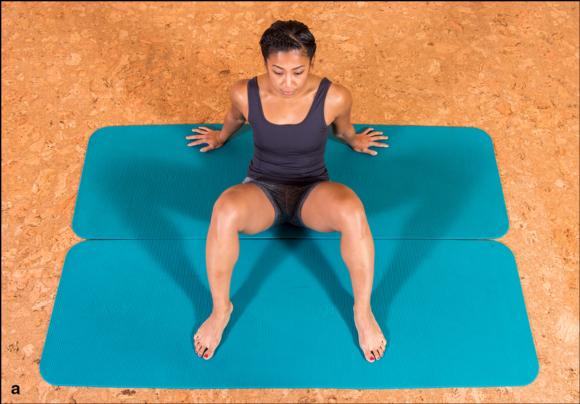
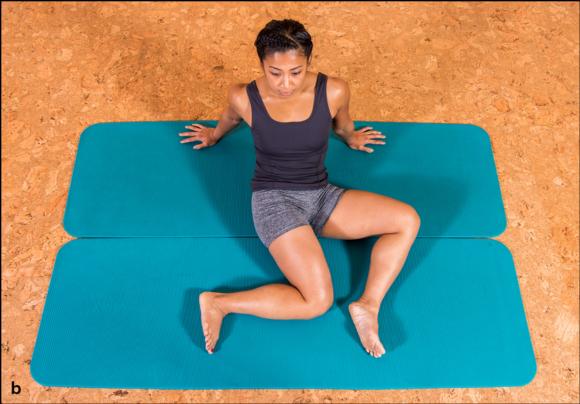
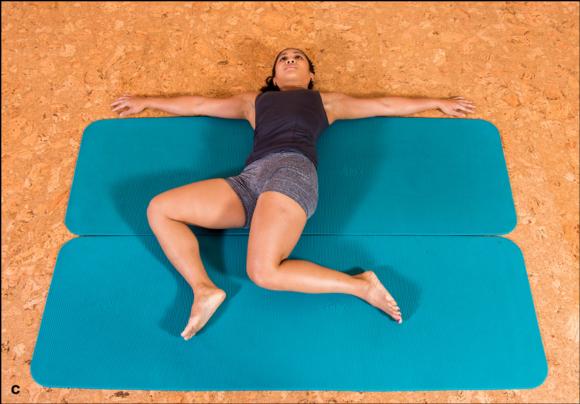
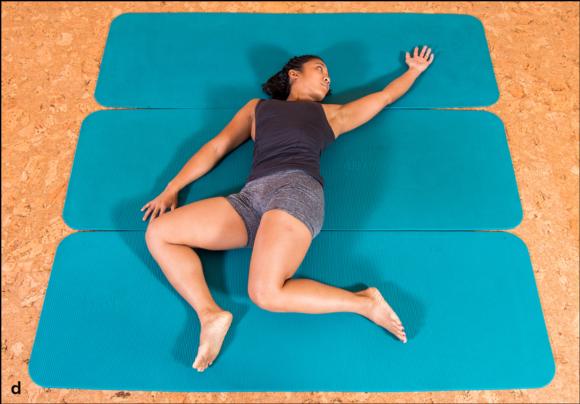
Figure 7.1 Hip-spine-shoulder stretch.
Hip Flexors-Torso-Shoulder Stretch
Because this stretch is performed while kneeling, it requires more active core motor control and core stabilization and simultaneous mobilization of your upper and lower core. If you have any anterior knee pain, cushion the knee with a pad or article of clothing to dampen the pressure and prevent pain. Do not perform this if it is painful.
Instructions
- Kneel on one leg with the other leg in front of you and the foot on the floor. Raise one arm overhead and lunge forward over the front leg. Press both hips forward and keep the chest lifted until you feel a stretch in front of the rear hip and in one or both groins (see figure 7.2a).
- Gently move the raised arm opposite the hip being stretched to increase the stretch into the torso, shoulder, and arm (see figure 7.2b).
- Come out of the lunge by lowering your arm and slightly relaxing your spine as you do a little StretchWave back to the starting position. Finish with a straight spine.
Expand the Net
Make bigger circles with the hips and torso and bigger movements with the arms (see figure 7.2c).
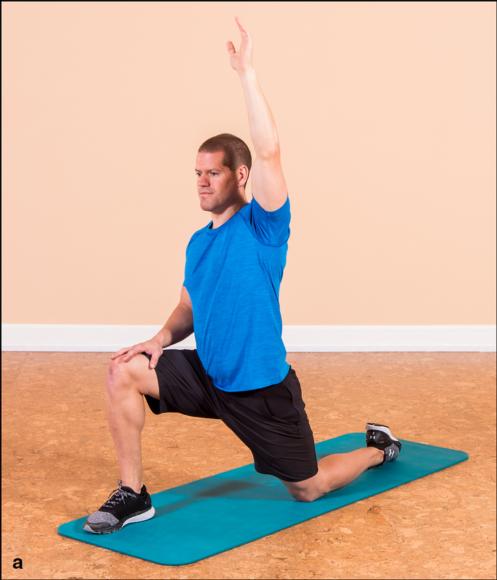
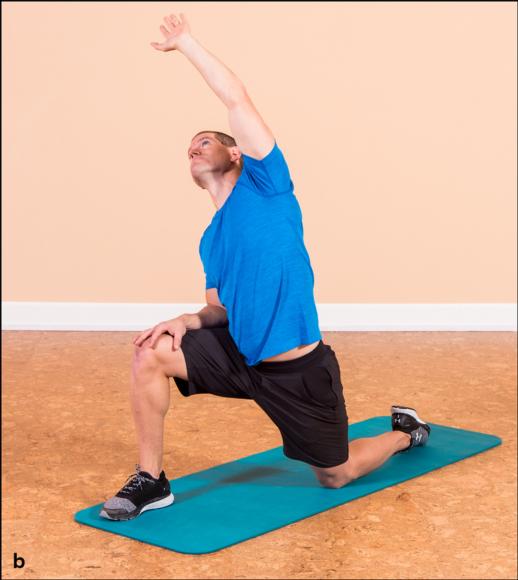
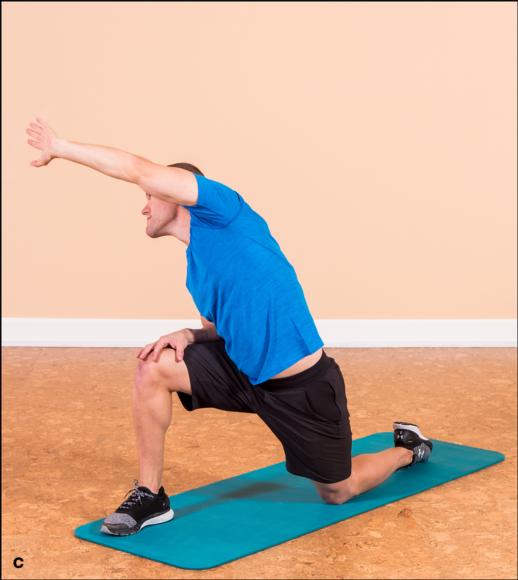
Figure 7.2 Hip flexors-torso-shoulder stretch.
Save
Save